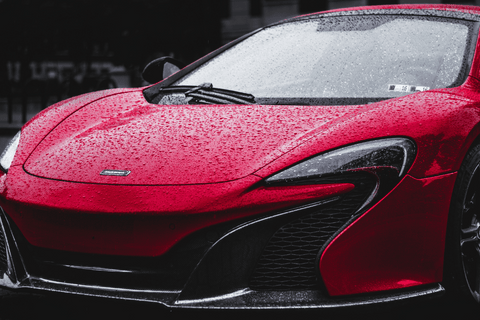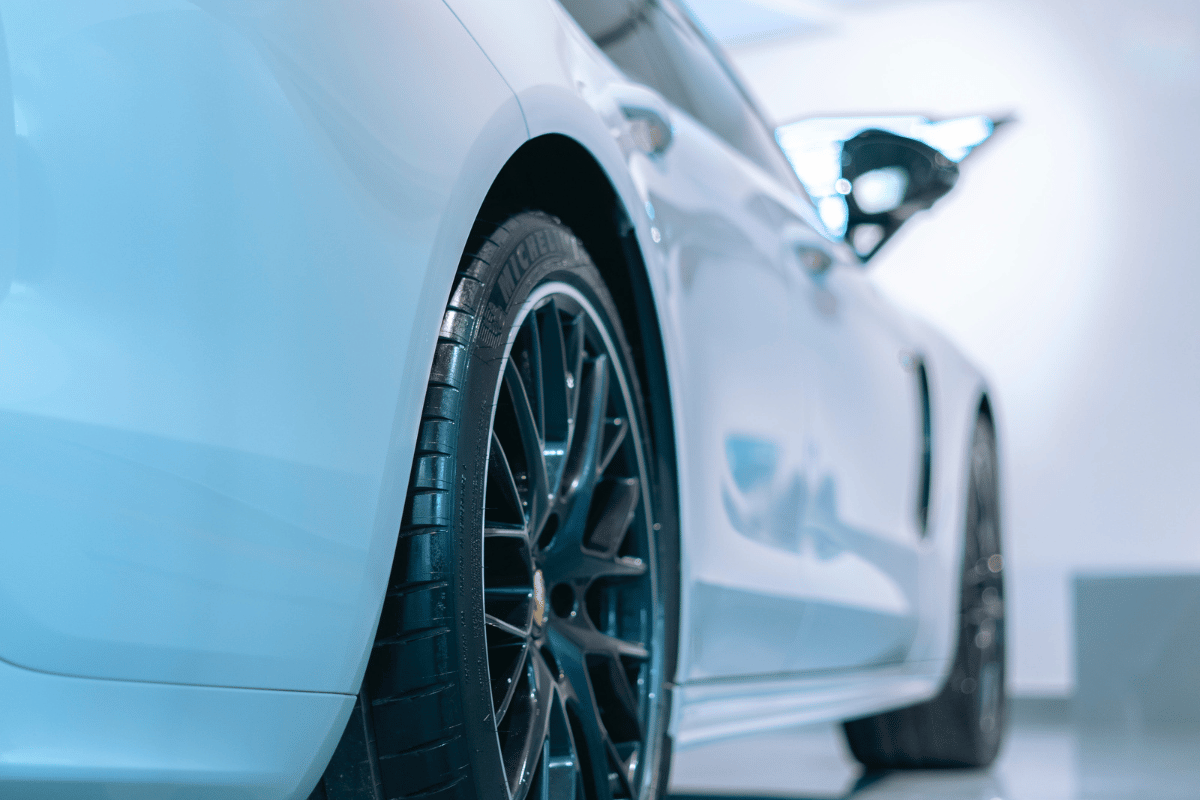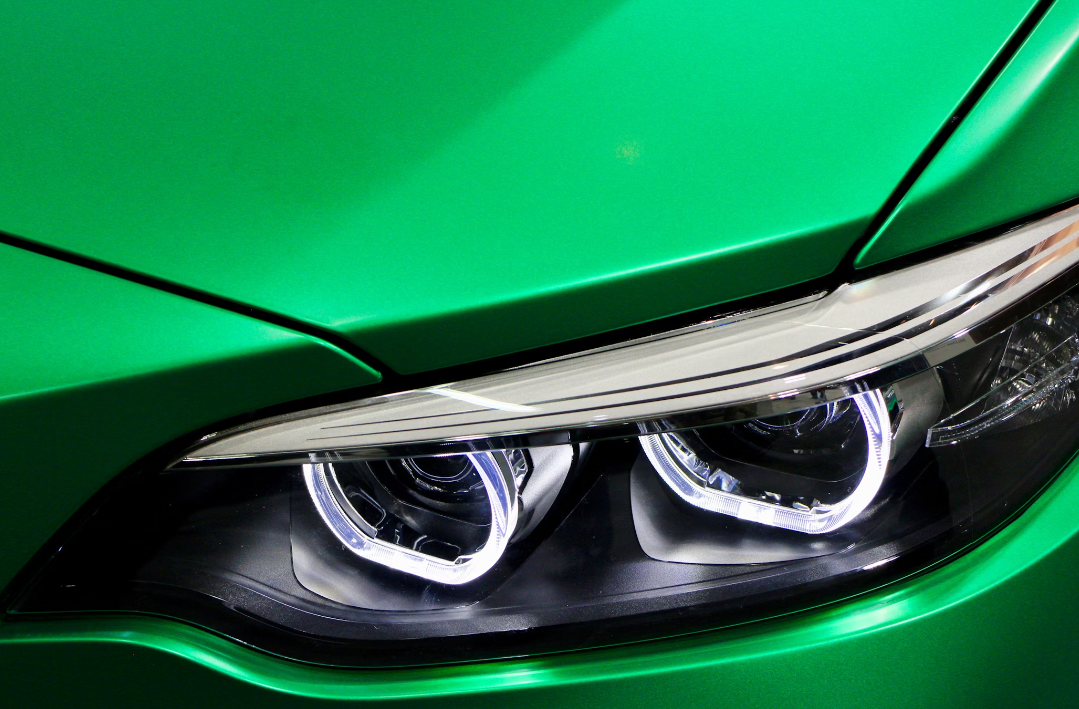If you're really into your ride, keeping that paint shiny and clean is a top priority. Rolling down the street with a sparkling car just feels good.
And keeping your paint fresh can actually help your car hold value if you ever decide to sell or trade up.
The problem is that waxing and polishing all the time just doesn't cut it these days. That stuff doesn't really last or protect your paint enough over the long run.
What you need is one of those high-tech ceramic or graphene coatings that hobbyists and pros use.
These coatings basically seal and shield the crap out of your paint so it stays glossy and new-looking for years.
TL;DR: Graphene Coating vs. Ceramic Coating
Graphene coating and ceramic coating are both excellent options for protecting your vehicle's paint.
Graphene lasts longer (5+ years vs 2-5 years), provides better thermal performance, has higher electrical conductivity, and is more environmentally friendly.
However, ceramic coatings tend to be cheaper and more readily available.
Overall, graphene coatings outperform ceramic coatings in durability, longevity, and several other vital areas. Graphene is the superior choice if maximum paint protection is your top priority.

What is Graphene Coating?
Graphene coating uses tiny graphene particles to create a super thin, durable protective shield over your car’s paint.
Now what is graphene in the first place? It’s made from carbon atoms linked together in a unique honeycomb pattern.
This makes graphene over 200 times stronger than steel. It's also flexible, impermeable to gases, and highly conductive.
Here's a cool fact - graphene was discovered by a couple of British professors back in 2004, who went on to win the Nobel Prize in 2010 for their research.
So it's a really futuristic, Nobel Prize-winning technology!
When used in automotive coatings, graphene provides the following benefits:
- Extreme scratch resistance and durability.
- Hydrophobic and oleophobic properties repel water and oils.
- Protects against UV rays, oxidation, and corrosion.
- Thermal management properties reduce surface heating.
- Prevents static buildup from discharging through sensitive electronics.
Graphene is also considered relatively environmentally friendly and non-toxic. However, some types of graphene, like graphene oxide, may have potential health risks worth understanding.
When used in coatings, these little graphene nanoparticles bond to your paint, wheels, glass, and trim on a molecular level.
This forms an additional protective layer just nanometers thick - yet provides immense strength and durability.
But don't let its tiny size fool you - that graphene film is insanely durable. It adds a glass-like shield that prevents scratches, repels water and oils, and blocks UV rays better than anything else.
Our Psycho Pro Graphene Detailer uses this technology to create a hydrophobic graphene layer that beads water for months between washes.
How Long Does Graphene Coating Last?
Quality graphene coatings typically last 5+ years with proper maintenance and care. Some graphene manufacturers claim lifespans of up to 10 years.
The reason graphene coats last so long is because graphene is incredibly strong at the atomic level. The bonds between the carbon atoms in graphene are super tough to break.
Graphene coats definitely outlast ordinary waxes or sealants you'd put on a car. They even outlast ceramic coats that are supposed to be extra durable.

Can You Put Graphene Over Ceramic Coating?
Yes, you can. But most people don't do this. Here's why:
Ceramic coatings already protect car paint really well on their own. Putting graphene on top is expensive and time-consuming. It's just not necessary for most people.
But if you do want to put graphene over ceramic, the process is the same as if you were coating bare paint. Here are the steps:
-
Wash your car super good first. Use a pH-balanced formula like the AvalonKing Ceramic Maintenance Shampoo for thorough surface cleaning and preparation. The shampoo even smells great with its candy apple scent!
- Clay bar the car. This gets any stuck-on gunk off the ceramic coating.
- Polish the ceramic carefully. This makes the surface smooth and ready for graphene.
-
Wipe with an isopropyl alcohol (IPA) solution or a panel wipe. This removes polish residue.
- Apply the graphene coating as directed on the bottle. Use a sponge or a microfiber applicator.
- Heat cure the graphene (if needed). Or just let it air dry for a full day.
- Don't wash the car! Wait at least 24 hours (if not more) before exposing it to rain or moisture.
The graphene will basically form a protective second layer that will reinforce any weak spots in the ceramic and help prevent swirl marks and scratches.
But again, most people don't bother with this. Ceramic alone is good protection. Graphene on top is overkill for casual car owners!

Graphene Coating: Before and After Effects
Here are the transformational effects that a graphene coating delivers:
Before Graphene Coating
- Dull, oxidized paint surface
- Paint vulnerable to swirl marks and scratches
- Contaminants easily bond to paintwork
- Water droplets and dirt cling to the paint
- Unprotected from UV rays, corrosion, and oxidation
After Graphene Coating
- Incredible glossy shine and depth of color
- Paint 10x more scratch and swirl resistant
- Ultra smooth finish repels water, grime, and oils
- Hydrophobic effect causes water to bead and sheet off
- Complete protection from environmental damage
In short, graphene coatings make your paint look wet and flawless, and beading while providing a durable protective shield.

What is Ceramic Coating?
Ceramic coatings are special liquids that protect and shine up car paint. When applied correctly, they form an extra layer of glass-like protection on the surface.
You can learn more about the science behind ceramic coatings in this in-depth guide from AvalonKing.
One well-reviewed DIY ceramic coating is Armor Shield IX Max. It provides extreme gloss and water beading using nanotechnology.
The formula is designed to be very easy for amateurs to apply. Even as a beginner, you can get great results with 3 years of guaranteed protection.
In general, ceramic coatings contain tiny ceramic particles that link together as they dry. This flexible glass coating bonds to the paint and makes it super slick.
The result? Water, mud, dirt, and grime can't stick well. Instead, they bead up and roll off the paint like on a waxed car. This "self-cleaning" effect keeps your paint looking cleaner for longer.
Ceramic coatings also reflect UV rays better. This prevents fading and dullness over time. Some formulas even block minor scratches and etching from things like bird poop.
Professional-grade ceramic coatings provide up to 5 years of protection and maintain up to 90% glossiness over time.
Lower-tier consumer formulas may start fading after 2 years. Frequent washing is still needed to maximize the lifespan of your ceramic coating.
There are now easy DIY ceramic sprays like the Armor Shield Lite for amateurs. In the past, only professional detailers could install thick liquid ceramic coatings that required special curing.
What is Ceramic Coating Made of?
Ceramic coatings are made up of a few key ingredients. The main one is silicon dioxide (SiO2), also called silica. You know silica as sand!
Ceramic coatings also contain solvents to make them liquid and unique additives that help them cure and bond to surfaces like car paint.
The key is the tiny nano-sized ceramic particles, ranging from 5 to 150 nanometers wide, floating around in the liquid coating.
Just how small are nanometers? Put it this way - a single strand of hair is 80,000 to 100,000 nanometers wide! So we're talking crazy small particles here.
When you apply the ceramic coating and let it dry and cure, all those microscopic ceramic particles connect and form a protective layer.
This layer is very smooth but also very tough and resistant to scratches, chemicals, environmental contaminants, you name it! It's like a layer of liquid glass protecting your car's paint.

Types of Ceramic Coating
There are three primary types of ceramic coatings:
1. Silica-based
These use silicon dioxide (also called silica) particles suspended in the liquid. Silica is a natural mineral found in quartz and sand.
Silica ceramic coatings are the most affordable option for DIYers. They provide decent protection and water beading.
Our Armor Shield IX Ceramic Coating is a silica-based solution.
2. Silicon-Based
Instead of silica, these coatings utilize organosilicon compounds. That's a fancy way to say they have carbon-silicon molecular bonds.
The organic part makes them more flexible yet still very hard when cured. So silicon ceramics excel in durability and weather/UV resistance.
3. Graphene-infused
Graphene is an ultra-strong carbon-based nanomaterial. Some premium ceramic coatings include tiny bits of graphene to enhance their characteristics.
Graphene ceramics offer the highest level of protection and longevity. But they are the most expensive type.
Multi-Layer
This is when detailers apply 2+ layers of ceramic coating stacked on each other. Doing so extends the lifespan even further - up to 10 years!
But multi-layer jobs require precise professional installation. So they are very pricey and time-consuming. Best left to expert detailers with special training.
So, in summary:
- Silica formulas = affordable starting point
- Silicon upgrades durability
- Graphene boosts performance
- Multi-layer takes it to the next level

What Are The Benefits of Ceramic Coating a Car?
Here are the main perks offered by ceramic coatings:
- Protects paint from oxidation, scratches, etching, and water spots.
- Creates a hydrophobic effect that repels water and contaminants.
- Enhances gloss for ultra-reflective wet look.
- Makes washing and cleaning easier.
- Guards against environmental damage from UV, salts, oils, acids.
- Reduces the need for waxes and sealants.
- Can self-heal minor scratches over time.
These benefits completely transform your vehicle's appearance. When you see those before and after results of a ceramic coating, the difference it makes is crazy.

Graphene vs. Ceramic Coating: Comparison Table
To summarize the differences at a glance, check out this handy comparison table:
| Characteristic | Graphene Coating | Ceramic Coating |
| Durability | 5-10 years | 2-5 years |
| Hardness | 10H (hardest known material) | 8H-10H |
| Hydrophobicity | High | Medium-High |
| Heat Tolerance | Excellent | Moderate |
| Electrical Conductivity | Excellent | Low |
| Water Spot Resistance | High | Moderate |
| Environmental Impact | Low | Moderate |
| Cost | $100+ | $50+ |
Differences Between Graphene and Ceramic Coating
Let's do a deep dive into what really sets graphene and ceramic coatings apart:
Materials Used
Graphene coatings use tiny graphene nanoparticles as the main ingredient. Graphene's unique atomic structure gives it insane strength despite how thin it is.
Ceramic coatings rely on silicon dioxide nanoparticles, which are not nearly as strong as graphene at a molecular level.
Winner: Graphene
Surface Adhesion and Durability
The impressive hardness and flexibility of graphene molecules result in greater bonding strength to painted surfaces.
Graphene coatings better withstand mechanical abrasion and remain intact much longer than ceramic.
Winner: Graphene
Ease of Applying
No overnight job here - they need a paint-perfect surface and a controlled environment.
Ceramics may be easier for DIYers thanks to more user-friendly versions.
Winner: Draw

Thermal and Electrical Conductivity
Graphene is the most thermally conductive material on Earth. This means it rapidly dissipates heat away from the coated surface.
Your car's paint stays cooler, reducing the chance of sun damage.
Ceramic is an insulator that prevents heat dissipation. Over time, the heat-trapping effect of ceramic can accelerate paint degradation compared to graphene.
Winner: Graphene
Water Beading
Graphene's hydrophobic properties cause insane water-beading action - droplets almost jump off the surface! This sheet of water helps keep the car cleaner between washes.
Ceramic still beads water nicely. However, graphene's water contact angle is higher, meaning droplets "sit up" taller on the surface and are quicker to roll off.
Some ceramic coatings like Adams Graphene Ceramic Coating use graphene additives to try to match pure graphene's water performance.
However, independent tests show leading nanoceramics like AvalonKing’s Armor Shield IX can match or exceed the durability of graphene-infused ceramics.
For example, AvalonKing's formula outperformed Adams' graphene ceramic on scratch resistance in a head-to-head test.
Winner: Draw

Cost Comparison
Quality DIY graphene coating costs around $100-150 for a 30ml bottle. Ceramic coating costs tend to be cheaper in the $50-100 range for a similar volume.
AvalonKing’s complete DIY ceramic coating kit costs just $74.99. You can also get a free one by applying the code “AS9BOGO” in the cart - insane value!
When you factor in the increased lifespan of graphene, the long-term cost difference is negligible.
Winner: Ceramic
Average Lifespan
Both offer insane longevity - 2 years minimum. This exceeds old-school waxes and sealants. But graphene pulls ahead slightly.
Graphene coatings remain fully intact for 5-10 years on average. They hold up to years of use and abuse better than any other coating technology.
Meanwhile, the lifespan of ceramic coating is approximately 2-5 years before degrading. You'll find exceptions offering equal protection, though. It depends on the specific products compared.
Winner: Graphene
Availability
Ceramics have market saturation with endless formulation options.
Graphene is trickier to find from fewer brands - for now.
Winner: Ceramic

Similarities Between Graphene and Ceramic Coating
Despite their differences, graphene and ceramic coatings share a few key similarities:
- Provide a hydrophobic self-cleaning effect
- Repel dirt, liquids, oils, and damaging contaminants
- Protect automotive paintwork from scratches, swirls, oxidation
- Create a glossy, reflective surface finish
- Require extensive prep work, including paint correction
- Are sensitive to improper application and environmental factors
- It can be applied to paint, glass, metal, wheels, and trim.
Bottomline: Is Graphene Coating Better than Ceramic Coating?
Graphene coating certainly holds significant advantages over ceramic coatings regarding durability, longevity, thermal performance, electrical conductivity, and environmental impact.
While ceramic coatings remain a viable paint protection option, graphene represents a cutting-edge technology thanks to the unmatched characteristics of graphene nanoparticles.
For car enthusiasts seeking the ultimate shine and protection, graphene coatings deliver superior performance and extended longevity that exceeds ceramic products.

Frequently Asked Questions (FAQs)
Let's answer some common questions about these advanced paint protection technologies.
What are the disadvantages of graphene coating?
The main downsides of graphene coatings are the high cost and limited availability compared to ceramic coatings. Graphene also requires meticulous preparation and application - any mistakes severely reduce its effectiveness.
Can you wax over a graphene coating?
It's not recommended. Graphene and ceramic coatings are designed to eliminate the need for wax. Putting wax over them provides no added benefit or protection.
Is ceramic coating good for your car?
Yes, ceramic coating is an excellent way to protect your car's paint. The nano-scale ceramic layer helps prevent oxidation, etching, spotting, and scratches. Ceramic coatings also enhance shine and make washing easier.
Is ceramic coating high maintenance?
Ceramic coatings are relatively low maintenance compared to waxes. Their durability reduces the need for frequent reapplication.
However, regular maintenance washing with a ceramic maintenance shampoo is still required, and environmental damage can impact ceramic coatings over time.
How do you wash a car with ceramic coating?
Use ph-neutral shampoos or soap and microfiber wash mitts. Rinse thoroughly with clean water. Avoid harsh chemicals, abrasive pads, or brushes. Hand washing is ideal, but touchless automatic washes are acceptable. Avoid rubbing the surface when wet.
Conclusion
While both deliver tremendous value, graphene coatings outperform ceramic coatings in several crucial areas like longevity, hardness, and thermal management.
Graphene represents the future of automotive paint protection thanks to nanotechnology that leverages graphene molecules' unparalleled strength and electrical properties.
We hope this graphene vs. ceramic coating comparison has shed light on the differences between these two paint protection titans. Use this knowledge to choose the best coating for your prized vehicle's finish.
For DIYers seeking professional-grade protection, check out Avalon King's line of DIY coating kits, specially formulated cleaners, and other accessories. Our easy-to-use industry-leading coatings provide the durability and shine today's drivers demand.












1 comment
Mic
From what I understand, the problem in using a graphene layer is adhesion to automotive paint. To the best of my knowledge they have not solved this problem yet due to graphene being a sheet with no electrical bonding available to automotive paint. For this reason, the best thing on the market for an automotive Protection coating is ceramic or silicon dioxide?
From what I understand, the problem in using a graphene layer is adhesion to automotive paint. To the best of my knowledge they have not solved this problem yet due to graphene being a sheet with no electrical bonding available to automotive paint. For this reason, the best thing on the market for an automotive Protection coating is ceramic or silicon dioxide?